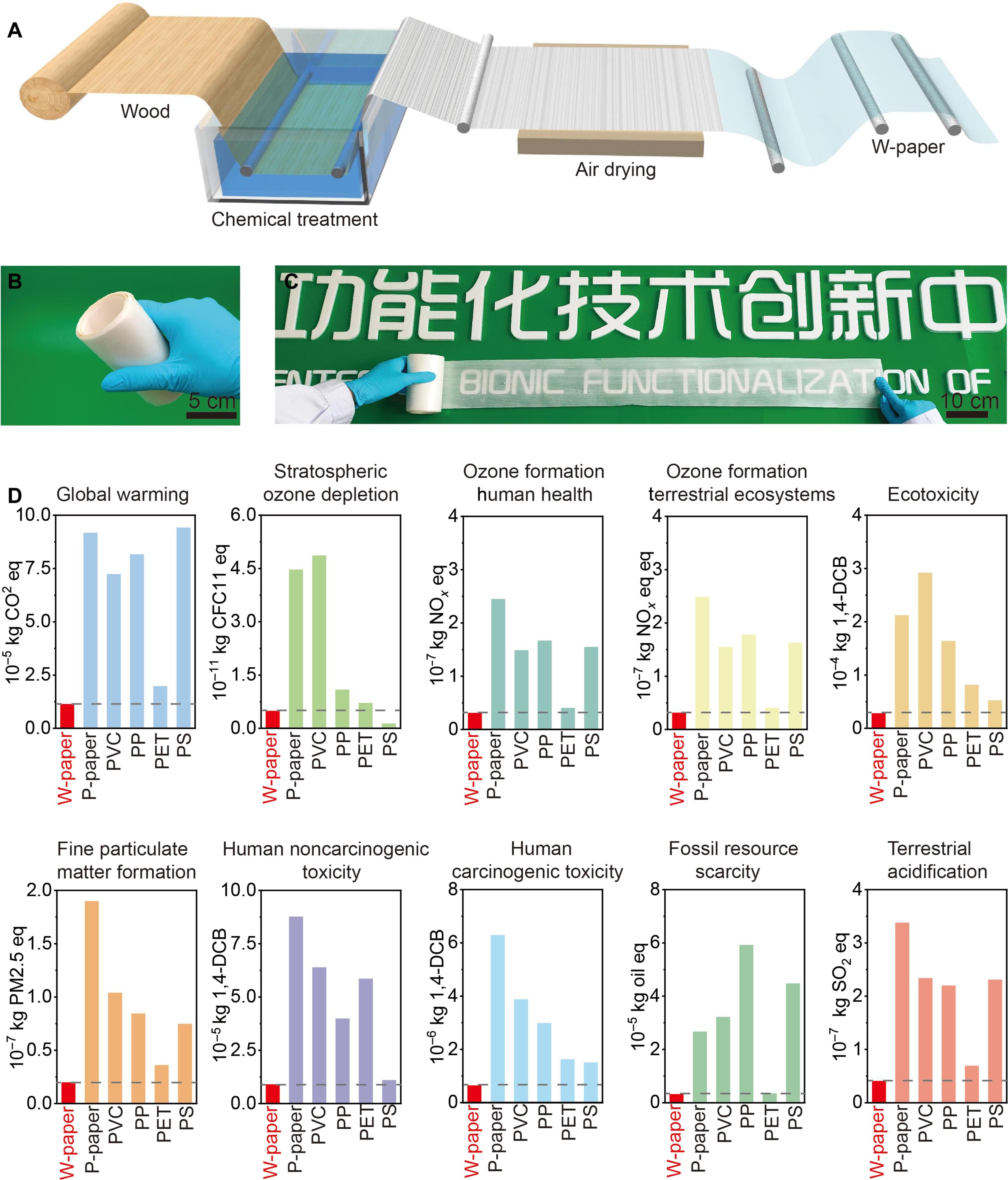Superstrong, sustainable, origami wood paper enabled by dual-phase nanostructure regulation in cell walls
IF 11.7
1区 综合性期刊
Q1 MULTIDISCIPLINARY SCIENCES
引用次数: 0
Abstract
Constructing a crystalline-amorphous hybrid structure is an effective strategy to overcome the conflict between the strength and toughness of materials. However, achieving such a material structure often involves complex, energy-intensive processing. Here, we leverage the natural wood featuring coexisting crystalline and amorphous regions to achieve superstrong and ultratough wood paper (W-paper) via a dual-phase nanostructure regulation strategy. After partially removing amorphous hemicellulose and eliminating most lignin, the treated wood can self-densify through an energy-efficient air drying, resulting in a W-paper with high tensile strength, toughness, and folding endurance. Coarse-grained molecular dynamics simulations reveal the underlying deformation mechanism of the crystalline and amorphous regions inside cell walls and the failure mechanism of the W-paper under tension. Life cycle assessment reveals that W-paper shows a lower environmental impact than commercial paper and common plastics. This dual-phase nanostructure regulation based on natural wood may provide valuable insights for developing high-performance and sustainable film materials.

细胞壁中的双相纳米结构调节实现了超强、可持续的折纸木纸。
构建晶体-非晶态混合结构是克服材料强度和韧性之间矛盾的有效策略。然而,实现这种材料结构往往需要复杂、高能耗的加工过程。在这里,我们利用天然木材结晶区和非晶区共存的特点,通过双相纳米结构调节策略实现了超强、超韧的木浆纸(W-paper)。在部分去除无定形半纤维素并去除大部分木质素后,经过处理的木材可通过节能风干实现自我致密化,从而造出具有高抗张强度、韧性和耐折性的木浆纸。粗粒度分子动力学模拟揭示了细胞壁内结晶区和无定形区的基本变形机制以及 W 纸在拉力作用下的失效机制。生命周期评估显示,W 纸对环境的影响低于商业用纸和普通塑料。这种基于天然木材的双相纳米结构规程可为开发高性能和可持续薄膜材料提供宝贵的启示。
本文章由计算机程序翻译,如有差异,请以英文原文为准。
求助全文
约1分钟内获得全文
求助全文
来源期刊

Science Advances
综合性期刊-综合性期刊
CiteScore
21.40
自引率
1.50%
发文量
1937
审稿时长
29 weeks
期刊介绍:
Science Advances, an open-access journal by AAAS, publishes impactful research in diverse scientific areas. It aims for fair, fast, and expert peer review, providing freely accessible research to readers. Led by distinguished scientists, the journal supports AAAS's mission by extending Science magazine's capacity to identify and promote significant advances. Evolving digital publishing technologies play a crucial role in advancing AAAS's global mission for science communication and benefitting humankind.
文献相关原料
公司名称
产品信息
阿拉丁
NaClO2
阿拉丁
sodium acetate
 求助内容:
求助内容: 应助结果提醒方式:
应助结果提醒方式:


